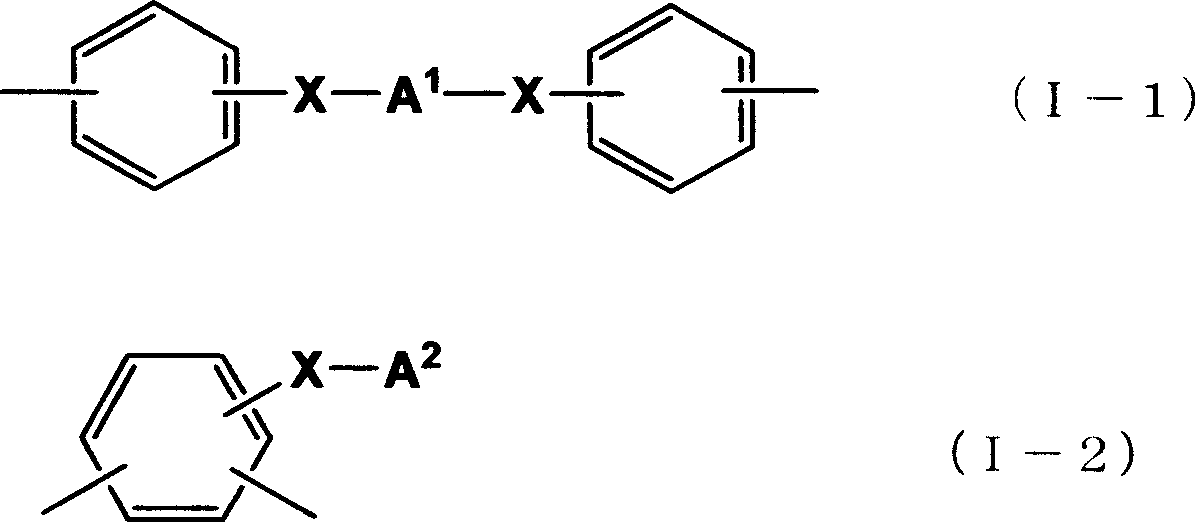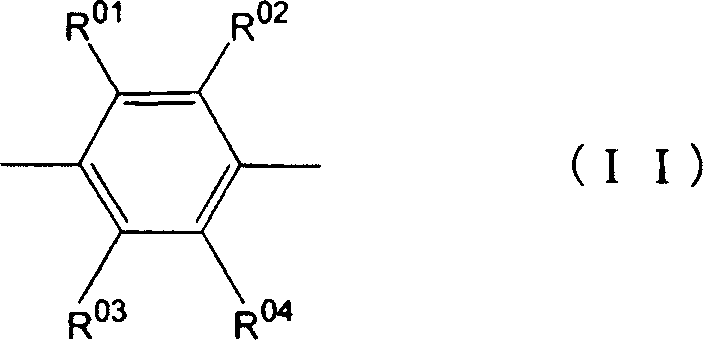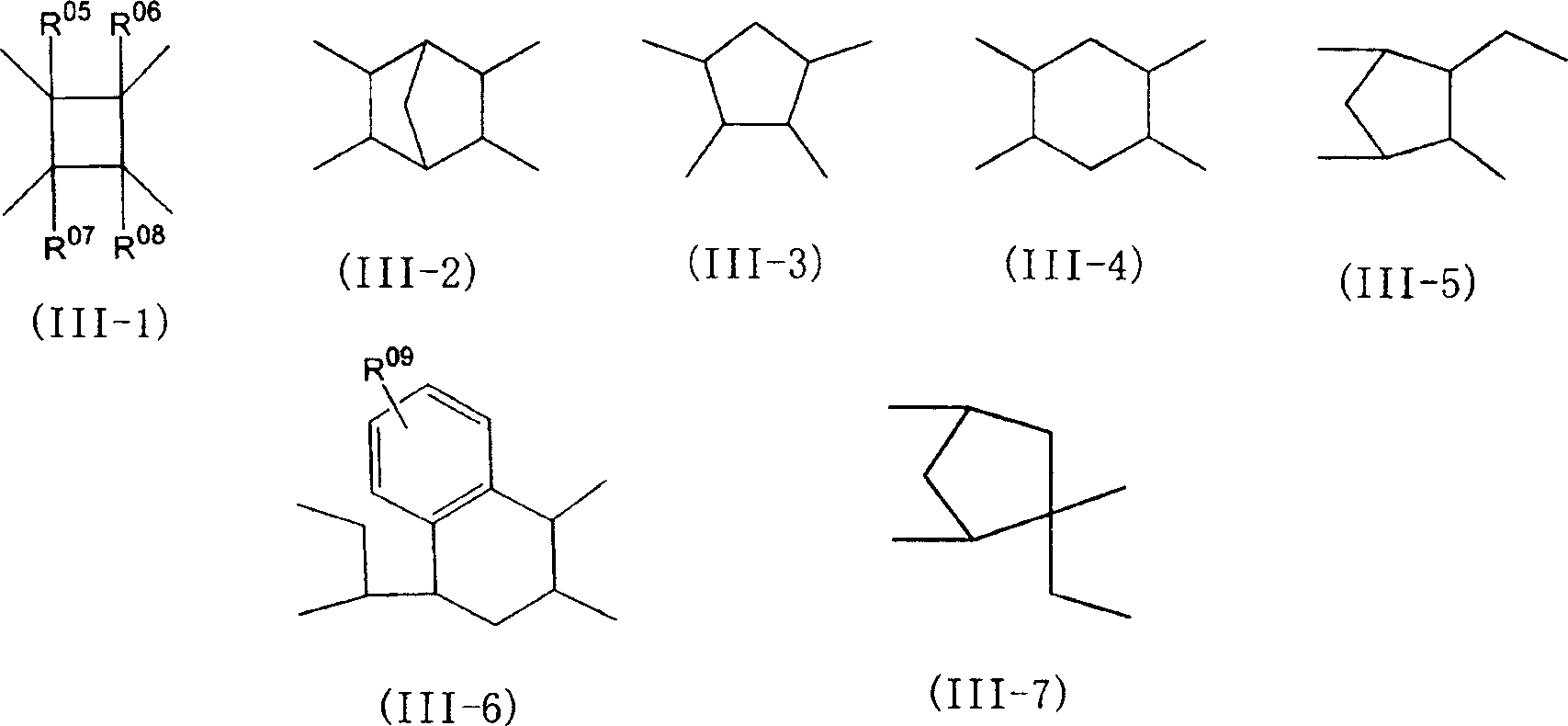Vertical alignment-type liquid crystal aligning agent and vertical alignment-type liquid crystal display device
A liquid crystal aligning agent and vertical alignment technology, applied in liquid crystal materials, chemical instruments and methods, instruments, etc., can solve problems such as reliability decline and performance decline, and achieve the effect of various characteristics.
- Summary
- Abstract
- Description
- Claims
- Application Information
AI Technical Summary
Problems solved by technology
Method used
Image
Examples
Synthetic example 58~66
[0125] The composition shown in Table 4 was added to N-methyl-2-pyrrolidone in the order of diamine and tetracarboxylic dianhydride (expressed as "acid anhydride" in the table) to prepare a solid content concentration of 20% by weight. solution, and allowed to react at 60° C. for 4 hours to obtain a polyamic acid polymer having a logarithmic viscosity shown in Table 2. After adding 5 times moles of pyridine and 3 times moles of acetic anhydride to the obtained polyamic acid polymer, the mixture was heated at 110° C. for 4 hours for a dehydration ring closure reaction. The resulting solution was reprecipitated with diethyl ether, recovered, and dried to obtain imidized polymers B1 to B9 having logarithmic viscosities and imidation ratios shown in Table 4.
[0126] Table 4
[0127] combine
[0128] Notes to Table 4: For diamine compounds and acid anhydrides, it is the same as the notes to Tables 1-3.
Embodiment 1
[0130] 2g of the polyamic acid polymer (A-1) obtained in Synthesis Example 1 was added to gamma-butyrolactone / N-methyl-2-pyrrolidone / butyl cellosolve=45 / 40 / 15 (weight ratio) to make it It was dissolved to prepare a solution having a solid content concentration of 6% by weight, and the solution was filtered with a filter having a pore diameter of 1 μm to prepare the liquid crystal aligning agent of the present invention.
[0131] The liquid crystal aligning agent was coated on a boron-doped silicon wafer with a spin coater, and dried on a hot plate at 200°C for 10 minutes to form a coating film with a dry film thickness of 0.3 μm, which was used as a substrate for volume resistivity measurement . The volume resistivity of the liquid crystal aligning film after high-temperature baking was evaluated using this board|substrate. The results are listed in Table 5.
[0132] Except for that, it carried out similarly to the above, prepared the solution of 4 weight% of solid content d...
Embodiment 2~93
[0137] Embodiment 2~93, comparative example 1~25
[0138] Except having used the polymer shown in Tables 5-8, it carried out similarly to Example 1, prepared the liquid crystal aligning agent, produced the board|substrate for volume resistivity measurement, and the liquid crystal display element, and evaluated it. The evaluation results are listed in Tables 5-8.
[0139] table 5
[0140]
Reality
apply
example
volume resistivity
(×10 12 Ω·cm)
vertically
Orientation
Residual DC
(V)
reliability test
polyamic acid
polymer
Additives
(weight%)
1
A-1
Additive A(5)
5.7
good
50
no spots
2
A-2
Additive A (30)
5.7
good
50
no spots
3
A-2
Additive B(5)
6.1
good
60
no spots
4
A-2
Additive C (10)
7.0 ...
PUM
| Property | Measurement | Unit |
|---|---|---|
| electrical resistivity | aaaaa | aaaaa |
| thickness | aaaaa | aaaaa |
| diameter | aaaaa | aaaaa |
Abstract
Description
Claims
Application Information
 Login to View More
Login to View More - R&D
- Intellectual Property
- Life Sciences
- Materials
- Tech Scout
- Unparalleled Data Quality
- Higher Quality Content
- 60% Fewer Hallucinations
Browse by: Latest US Patents, China's latest patents, Technical Efficacy Thesaurus, Application Domain, Technology Topic, Popular Technical Reports.
© 2025 PatSnap. All rights reserved.Legal|Privacy policy|Modern Slavery Act Transparency Statement|Sitemap|About US| Contact US: help@patsnap.com



